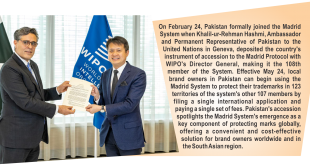The Belt and Road Forum for International Cooperation will be held on May 14 to 15 in Beijing. The following is some basic information about the Belt and Road Initiative.
ORIGINATION
The Belt and Road Initiative comprises the land-based Silk Road Economic Belt and the 2Ist Century Maritime Silk Road. The initiative was put forward for the first time by Chinese President Xi Jinping in 2013 during his state visits to Kazakhstan and Indonesia.
Building upon the spirit of the ancient Silk Road – peace and cooperation, openness and inclusiveness, mutual learning and mutual benefits, the modern Belt and Road is a transnational network connecting Asia with Europe and Africa, with the aim of promoting common development among all parses involved,
POPULARITY
The initiative has won the support of more than 100 countries and international organizations, among which more than 40 have signed cooperation agreements with China.
The UN General Assembly, the UN Security Council and the Asia-Pacific Economic Cooperation Forum have incorporated or reflected Belt and Road cooperation in their resolutions or official documents.
CONNECTIVITY
A series of major transport, energy and communications projects, including the multi-purpose road-rail Padma Bridge in Bangladesh, the China-Pakistan Economic Corridor, and China Railway Express trains to Europe, have witnessed breakthroughs over the past three years and more.
TRADE
Since 2013, China has invested more than -50 billion US. dollars in Belt and Road countries. A total of 56 economic and trade cooperation zones have already been built by Chinese businesses there, generating nearly 1.1 billion dollars in tax revenue and creating 180,000 local jobs.
Trade between China and countries along the Belt and Road totaled 6.3 trillion yuan (about 913 billion U.S. dote) in 2016.
FINANCIAL INTEGRATION
China has dedicated 40 billion dollars to a Silk Road Pond and set up the Asian infrastructure Investment Bank (AHB) in 2015 to provide financing for infrastructure improvement in Asia.
So far, the AUB has seen its membership expanded to 70, with the multilateral development bank’s total lending amounting to over 2 billion dollars.
ECONOMIC COKRIDOBS
China is also pushing forward six economic corridors in the framework of the Belt: and road Initiative, namely, the New Eurasian Continental Bridge, the China-Mongolia-Russia, Corridor, the China-Central Asia-West Asia Corridor, the China-Indochina Peninsula Corridor, the China-Pakistan Corridor, and the Bangladesh-China-India-Myanmar Corridor
Together, the six corridors form a trade and transport network across Eurasia, laying i solid foundation for regional and trans-regional development plans.
PEOPLE-TO-PEOPIE BOND
While the physical connection of rail lines and ports brings countries closer through ease of travel and logistics, the Belt and Road Initiative also lays emphasis on people-to-people bond. On June 22,2016, in a speech at the Leg-islative Chamber of the Uzbek Supreme Assembly in Tashkent, Xi called for building a green, healthy, intelligent and peaceful Silk Road, laying out the future of the initiative.
VISION
The Chinese president has said the initiative will contribute to enhancing connectivity in the Asia-Pacific and other regions, and pledged to seek synergy in development strategies and cooperation initiatives with relevant parties. The initiative, based on the idea of common development and prosperity, will benefit all the people along the routes, Xi has said.
Chinese Foreign Minister Wang Yi has said “the Belt and Road has become the most important public good China has provided to the world, ft was first proposed by China but now is for all countries to enjoy.”
Source: https://www.thenews.com.pk
 Jahangir's World Times First Comprehensive Magazine for students/teachers of competitive exams and general readers as well.
Jahangir's World Times First Comprehensive Magazine for students/teachers of competitive exams and general readers as well.


